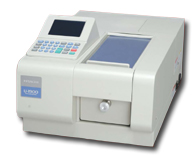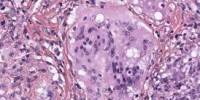Materials
All the chemicals and reagents used in this study were of analytical grade. Their experimental mixtures were prepared in standard volumetric flasks about 30 minutes prior to recording the data. Suitable storage conditions were maintained to store the working chemicals and reagents.
Apparatuses used in the present study
- Volumetric flasks (50ml, 100 ml & 1000 ml)
- Conical flasks (250 ml)
- Beaker (250 ml, 1000ml)
- Burette
- Pipette (1ml, 2ml, &5ml)
- Pipette filler
- Mortar & Pestle
- Stand & Clamp
- Funnel
- Filter Paper

Fig 3.1.1.: Apparatus used in the study
Fig 3.1.2.3: Electric Dryer (Model-L-C Oven)
- Ø Disintegration Time Test Apparatus (Model-PTZS)
3.1.3 Reagents used for the study
a) Hydrochloric acid (HCl)
b) Sodium Hydroxide (NaOH)
c) Oxalic Acid
d) Sodium Carbonate (Na2CO3)
e) Distilled water
f) Phenolphthalein indicator
g) Methyl orange indicator
3.1.4 Active Ingredients used in the study
a) Pure Tetracycline HCl powder
b) Tetracycline HCl in solid dosage form
3.1.5 Samples used in the study
- Several brands of Marketed Tetracycline HCl capsule
3.2 Preparation of stock solutions.
3.2.1 Preparation of standard 5 N oxalic acid solutionsAbout 31.5 g pure oxalic acid was weighed out on an electronic balance and transferred into a 100 ml volumetric flask. Then it was dissolved with sufficient water and the final volume was made up to the mark of the volumetric flask with water and stored as a stock solution.
Calculation
Eq. wt. of oxalic acid (C2H2O4.2H2O) = 126 / 2 = 63 g
1000 ml 1 N solution contains 63 g sodium hydroxide
100 ,, 5 N ,, ,, ( 63 × 5 × 100 ) / 1000 ,, ,,
= 31.5 g ,, ,,
So, 31.5 g of oxalic acid was required to produce 100 ml of 5 N solution.
3.2.2 Preparation of 5 N sodium hydroxide solutions
About 200 g of pure sodium hydroxide was weighed out carefully on an electronic balance and transferred into a 1000 ml volumetric flask. Sufficient amount of distilled water was added to dissolve and after that the volume was made up to the mark with water.
Calculation
Eq. wt. of sodium hydroxide = 40
1000 ml 1 M solution contains 40 g sodium hydroxide
,, 5M ,, ,, 40 × 5 ,, ,,
= 200 g ,, ,,
So, 200 g of sodium hydroxide was required to produce 1000 ml of 5 N solution.
3.2.3 Standardization of 5N sodium hydroxide with oxalic acid
The burette was filled with oxalic acid. 10 ml of sodium hydroxide solution was taken in the conical flask and it was diluted with 10 ml of distilled water, 2 drops of phenolphthalein solution was added as an indicator and became pink in color. Then it was titrated with oxalic acid till the color changed to colorless.
Table 3.2.3.1: Standardization data chart for 5N sodium hydroxide
No. | Volume of oxalic acid | Burette reading (ml) | Average volume of sodium hydroxide (ml) | ||
IBR | FBR | Volume of sodium hydroxide (ml) | |||
1. | 10 | 1.0 | 11.50 | 10.50 | 10.53 |
2. | 10 | 11.50 | 22.20 | 10.70 | |
3. | 10 | 22.20 | 32.60 | 10.40 | |
Strength of NaOH in normality
V1 = volume of oxalic acid = 10ml
S1 – strength of oxalic acid = 5 N
V2 = volume of NaOH = 10.53ml
S2 = strength of NaOH =??
We know,
V1 × S1 = V2× S2
Or, S2 = (V1×S1) / V2 = (10× 5 N) /10.53 = 4.75 N
3.2.4 Preparation of standard 0.01 N sodium carbonate solutions
About 53 mg pure sodium carbonate was weighed out on an electronic balance and transferred into a 100 ml volumetric flask. Then it was dissolved with sufficient water and the final volume was made up to the mark with water.
Calculation
Eq. wt. of sodium carbonate (Na2CO3) = 53 g
1000 ml 1 N solution contains 53 g sodium hydroxide
100 ,, 0.01 N ,, ,, ( 53 × 0.01 × 100 ) / 1000 ,, ,,
= 0.053 g ,, ,,
So, 0.053 g of sodium carbonate was required to produce 100 ml of 0.01 N solutions.
3.2.5 Preparation of 0.01 N hydrochloric acid solutions
About 0.83 ml of pure hydrochloric acid was weighed out carefully on an electronic balance and transferred into a 1000 ml volumetric flask containing 100 ml of distilled water and mixed. Then the volume was made up to the mark with water.
Calculation
Molecular wt. of hydrochloric acid = 36.50 g
Eq. wt. of hydrochloric acid = 36.50 g
To prepare 0.01 N HCl solution 0.365 g HCl needed.
The supplied concentrated HCl was of 37% by weight & sp. gr. 1.19, then,
1 cc of HCl contains, (37/100) ×1.19 g of HCl = 0.4403 ml of HCl
0.4403 ml HCl needed for 1 cc
1 ,, ,, ,, ,, (1/0.4403),,
0.365 ,, ,, ,, ,, (0.365/0.4403),,
= 0.83 cc
So, 0.83 cc of hydrochloric acid was required to produce 1000 ml of 0.01 N solutions.
3.2.6 Standardization of 0.01N hydrochloric acid with sodium carbonate
The burette was filled with hydrochloric acid solution. 10 ml of sodium carbonate solution was taken in the conical flask and it was diluted with 10 ml of distilled water, 2 drops of methyl orange solution was added as an indicator and became red in color. Then it was titrated with hydrochloric acid till the color changed to orange.
Table 3.2.6.1: Standardization data chart for 0.01N hydrochloric acid
No. | Volume of sodium carbonate | Burette reading (ml) | Average volume of hydrochloric acid (ml) | ||
IBR | FBR | Volume of hydrochloric acid (ml) | |||
1. | 10 | 0.00 | 10.50 | 10.50 | 10.50 |
2. | 10 | 10.50 | 20.90 | 10.40 | |
3. | 10 | 20.90 | 31.50 | 10.60 | |
Strength of HCl in normality
V1 = volume of sodium carbonate = 10 ml
S1 – strength of sodium carbonate = 0.01 N
V2 = volume of HCl = 10.50 ml
S2 = strength of HCl =??
We know,
V1 × S1 = V2× S2
Or, S2 = (V1 × S1) / V2 = (10×0.01 N) /10.50 = 0.0095 N
3.3 Methods
Two types of test were performed during the project work;
- Physical parameters test
- Chemical test (Spectrophotometric analysis for potency)
3.3.1 Physical parameters test
Following parameters were tested for capsules; including:
- Appearance (Color & Shape)
- Weight Variation
- Disintegration Time
3.3.1.1 Appearance Test
Physical appearance color and shape of all the capsules were identified visually. Following appearance were identified for Tetracycline HCl capsules:
Table 3.3.1.1: List of appearance of sample capsules
Sample No | Color of Body | Color of Cap | Shape |
TET001 | Yellow | Red | Cylindrical |
TET002 | Yellow | Red | Cylindrical |
TET003 | Yellow | Red | Cylindrical |
TET004 | Yellow | Red | Cylindrical |
TET005 | Yellow | Red | Cylindrical |
TET006 | Yellow | Red | Cylindrical |
TET007 | Yellow | Red | Cylindrical |
TET008 | Yellow | Red | Cylindrical |
TET009 | Yellow | Green | Cylindrical |
TET010 | White | Ash (light sky) | Cylindrical |
3.3.1.2 Weight Variation Test
The weight variation of the capsule can be measured by weighing each individual capsules and determining the percent difference from the intended amount. Guidelines in the USP 24 /NF19 Supplement 1 indicate that each capsule “shall be not less than 90% and not more than 110% of the theoretically calculated weight for each unit”. Mainly weight variation of drug from batch to batch of same company occurred by the given amount of any drug such as active drug or excipients. 20 capsules should be taken for this test.
- Ten capsules of each brand were taken
- Weighed out carefully on an electronic balance
- Calculated carefully
Specification:
Table 3.3.1.2: weight variation tolerance for capsule
Average Mass | Percentage of Deviation |
80 mg / Less | ±10% |
More 80 mg Less 250 mg | ±7.5% |
More than 250 mg or More | ±5% |
For this study of weight variation test of Tetracycline HCl capsule percentages deviation was considered ±7.5%, as the average weight of tetracycline HCl capsule were found to be less or more than 250 mg.
Calculation of weight variation
To calculate the weight variation of capsules in a batch, it is required to determined the folloing data.
Weight of taken of capsule in that batch (W)
Average weight of capsule in that batch (WA)
Highest weight of capsule in that batch (WH)
Lowest weight of capsule in that batch (WL)
WH― WA
So, % of variation for highest weight of capsule = × 100
WA
WL ―WA
And, % of variation for lowest weight of capsule = × 100
WA
3.3.1.3 Disintegration time test:
The disintegration test was performed to determine the time required for the capsules to disintegrate. The test is very important and necessary for all the capsules because the dissolution rate depends upon the time of disintegration which ultimately affects the rate of absorption of drugs.
5 samples were placed into a testing basket assembly which was introduced into a special holder and placed into a water bath. The water inside the water bath was heated to 37oC. The disintegration baskets were moved smoothly up and down for 28-32 stokes per minute and for a distance of 55mm. The samples were disintegrated if no solid rest was left within the basket.
3.3.2 Potency test (active content)
3.3.2.1 For raw (Standard) materials
First, 100 mg of Tetracycline HCl was taken carefully by electric balance and dissolved in 100 ml volumetric flask with 0.01 M HCl solutions. Then, 1 ml solution was transferred to another 100 ml volumetric flask and 75 ml 0.01 M HCl was added to it. Again 5 ml of 5 M NaOH added and then the volume was made up to the mark with water.
A few minutes waited and measured the absorbance in a suitable spectrophotometer at 380 nm wave length.
3.3.2.2 For Capsule (Sample):
Weighted out accurately 100 mg of the powder by electric balance and dissolved in 100 ml volumetric flask with 0.01 M HCl solutions. Then, 1 ml solution was transferred to another 100 ml volumetric flask and 75 ml 0.01 M HCl was added to it. Again 5 ml of 5 M NaOH added and then the volume was made up to the mark with water.
A few minutes waited and measured the absorbance in a suitable spectrophotometer at 380 nm wave length.
Absorbance of the sample
Calculation: × 100
Absorbance of the standard
= % of Tetracycline present in the sample
3.3.3 More Rules for Successful Spectrophotometric Analysis
3.3.3.1 Standard solution
About 50 mg of pure standard Tetracycline HCl weighted out accurately into a 250 ml volumetric flask. Added 100 ml of 0.1 N HCl well shaked and dissolved volume with sample solvent and then shaked. 5 ml solution was taken into 100 ml with same solvent hounded.
3.3.3.2 Sample solution
Weighted out accurately equivalent to about 50 mg of sample Tetracycline HCl into a 250 ml volumetric flask. Then followed the standard preparation.
The absorbance of standard and sample solution was determined maximum at 274 nm in a suitable Spectrophotometer using 0.1 N HCl acid as a blank.
AU WS
Calculation = × × PS × W
AS WU
Where,
AU = Absorbance of Sample solution
AS= Absorbance of standard solution
WS= Weight of Standard in mg
WU= Sample taken in mg
PS= Potency of Standard sample in mg
W= Potency of
required sample in mg





















